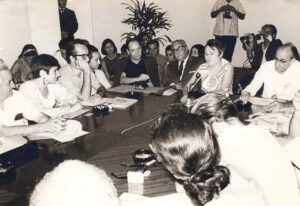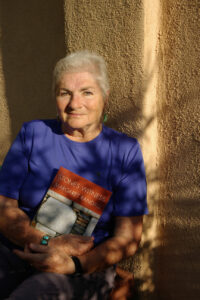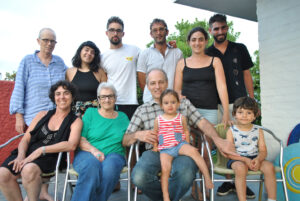Margaret Randall was born on December 6th, 1936, in New York City. Growing up, she had occasional crushes on women but gave little thought to her sexuality. At the age of ten, Margaret and her family moved to Albuquerque, New Mexico. Despite the provincial surroundings, Margaret and her two siblings travelled on holidays to Alaska, South America, and Europe. The exposure to other cultures opened Margaret’s eyes to the lives of other people across the globe.
Whilst studying at the University of New Mexico, Margaret became friends with celebrated painter Elaine de Kooning, who had an important influence on her life. In the late 1950s, she moved back to New York City after a failed first marriage, where she started writing and performing poetry.
In 1960, she moved to Mexico where she formed the influential literary magazine El Corno Emplumado (‘The Plumed Horn’) with other influential US and Latin American poets. Here, she met Sergio Mondragón, whom she married and had two daughters with before separating. In 1967, Margaret attained Mexican citizenship. The following year, the magazine aligned itself with the Mexican student movement and spoke out against the Tlatelolco massacre of unarmed protesters. The subsequent Mexican government crackdown on activists forced Margaret underground. She sent her four young children alone to Cuba while she escaped Mexico. When she reached Cuba, she worked as a freelance journalist, writer, photographer, and oral historian, focusing on how a Socialist revolution may impact women. She also documented the lives and struggles of Cuban, Chilean, Peruvian, Vietnamese, and Nicaraguan women.
After 11 years in Cuba, she lived in Managua, Nicaragua for four years. Here, she wrote about Nicaraguan women and worked with the Sandinista government. After moving back to the US, she was ordered deported under the McCarran-Walter Act of 1952, with her writing deemed to be “against the good order and happiness of the United States”. After a three-year battle, her U.S. citizenship was realized again. Shortly thereafter, Margaret came out as a lesbian, to which her family were very loving and supportive. Two weeks later, she had her first relationship with a woman.
Throughout the late 1980s and early 1990s, Margaret taught at several universities, including Trinity College in Hartford, Connecticut. After retirement, she focused on writing full-time.
A prolific writer, Margaret has released over 150 books including Che On My Mind, a feminist poet’s reminiscence of Che Guevara, and Sandino’s Daughters, which detailed Nicaraguan women’s struggle against the dictator Somoza. She is also an avid photographer and has exhibited her photographs all over the US.
Today, Margaret Randall’s legacy thrives through her poetry, activism, and dedication to justice. With four children, ten grandchildren, and two great-grandchildren, she continues to inspire future generations. Margaret lives with Barbara Byers, a visual artist and her wife of ten years, in Albuquerque, New Mexico.
































